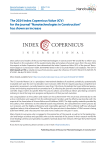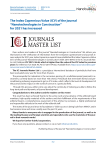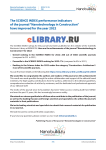Nanotechnologies in Construction: A Scientific Internet-Journal @nanobuild-en
Статьи журнала - Nanotechnologies in Construction: A Scientific Internet-Journal
Все статьи: 572
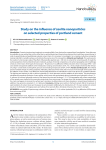
Study on the influence of zeolite nanoparticles on selected properties of portland cement
Статья научная
Introduction. Cement microstructure imaging is an emerging field of non-destructive compositional investigation. Some data may be available via one method but not the other due to various physical and chemical mechanisms that could cause cement decay. In order to quantitatively and qualitatively evaluate cement stone, it is necessary to investigate it as a complex multi-phase composite material, identify its crystalline phases, and estimate the precise size of its nanoparticles. Materials and methods. This work presents the results of a microscopic study of the effect of Nanozeolites (particle size ≤ 100 nm) on cements for cementing wells. To study the surface properties (chemical bonds between molecules, analysis of mineral composition, and surface topography and morphology) of class G cement stone, three types of microscopes – IR spectrum, X-ray diffraction (XRD), and atomic force microscopy (AFM) – were used. Zeolite nanoparticle additives were introduced at varying concentrations (0.5%, 1%, 1.5% by weight of cement) after 8 hours of curing in a water bath at atmospheric pressure and a heating temperature of 60оC (140оF). Results and discussion. The infrared spectra revealed changes in surface properties, indicating a decrease in free water and an increase in the strength of the system with the addition of nano zeolite. X-ray diffraction method (XRD) allowed for the identification of the main phases of crystalline hydration. The highest peak intensity is due to calcium hydroxide CH, which decreases with the addition of nano zeolite. This phenomenon elucidates the pozzolanic behavior of nano zeolite, which reacts with precipitated calcium hydroxide upon hydration to form C–S– H, reduces the calcium hydroxide content of the layered structure and increases C–S–H. The topography and surface morphology of the samples were studied at the nanoscale using atomic force microscopy. The images show the nanoparticles propagate along the cracks and appear to increase the surface layer's resistance to deformation and stress relaxation in cement-based materials. In addition, they promote viscoelastic C–S–H behavior. Conclusion. Adding nano zeolite to Portland cement affects the process of early hydration of cement stone and increases its early strength. Additionally, the introduction of 1.5% nano zeolite into cement results in the formation of irregular peaks and valleys of low porosity filler, ultimately enhancing the cement's strength.
Бесплатно
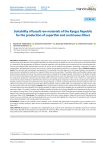
Статья научная
Introduction. Literature analysis and patent search revealed that basalt rock and its fibers have exceptional physical and technical characteristics and alongside abundant raw material reserves. Based on this, the use of basalt rocks and their fibers as a material for the development of advance composite materials with high performance characteristics is a promising direction. Diverse technological fields and economic sectors, as well as various material requirements, necessitate a spectrum of systems, compositions, and properties for basalt and its melts, whether for generating superthin or continuous fibers. Methods and materials. The chemical and mineralogical compositions of some basalt rocks from deposits in the Kyrgyz Republic were studied to determine their suitability for production of superthin fibers and continuous fibers. The acidity modulus and fusibility modulus were determined by calculation based on the chemical composition of basalts of the Kyrgyz Republic. Among them, the quality of basalts from the Suluu-Terek deposit and basalts from the Toru-Aigyr deposit fully meets the requirements for the quality of raw materials for creating the production of basalt superthin fibers (BSF) and basalt continuous fibers (CBF). In the research we used physical and chemical analysis methods to determine the chemical and mineralogical composition of basalt. By calculating the acidity and fusibility modulus of basalt raw materials from the Kyrgyz Republic, as well as comparing them with relevant standards, their suitability for the production of basalt superthin fiber (BSF) and basalt continuous fiber (CBF) was established. The object of the study was the basalts of the Sulu-Terek deposit. Results of the study include an analysis of the chemical and mineralogical compositions of certain basalt rocks from deposits in the Kyrgyz Republic in order to assess their suitability for the production of superthin and continuous fibers. The acidity modulus and fusibility modulus of basalts of the Kyrgyz Republic were determined by the calculation method. Among them, it was revealed that the quality of basalts from the Suluu-Terek deposit and basalts from the Toru-Aigyr deposit fully meets the requirements for the quality of raw materials for the production of basalt superthin fibers (BSF) and basalt continuous fibers (CBF). Conclusion. The suitability of basalt rocks from various deposits, especially Suluu-Terek, Taldy-Bulak and Kashka-Suu, was confirmed, with recommendations for use. The results also highlight the importance of compliance with standards when selecting deposits and setting production parameters.
Бесплатно
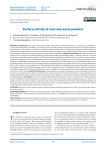
Surface activity of concrete waste powders
Статья научная
Introduction. One of the most large-tonnage wastes of the construction industry is a concrete scrap, obtained as a result of the dismantling of buildings and structures, the service life of which has reached its maximum or requires significant capital changes. In our opinion, works on the use of the resulting dust-like fraction are of particular interest. One of the promising methodological approaches in this direction is the observance of the principles of nanotechnology, which consists of obtaining finely dispersed components as active components of the created compositions. Materials and methods. Therefore, the objects of research in this work were fine powders obtained by mechanical grinding of lightweight (sample 1) and heavy (sample 2) concrete of a five-story residential panel house built in 1979. The elemental composition and specific surface area of the samples were determined, thermogravimetry of the studied powder systems was carried out, the surface tension of the experimental samples and the dispersion and polarization components of this indicator were determined by the OVRK method. A new methodological approach to the determination of the surface tension of powder systems is proposed, based on the determination of the functional dependence of the surface tension on the pressing force of the prototypes. The possibility of calculating macroenergy characteristics (atomization energy, specific mass atomization energy) of waste concrete samples is shown. These physicochemical indicators characterize the potential supply of internal energy of the system, which is capable of transforming into free surface energy during mechanical destruction of the material. Results and discussions. Thermogravimetric analysis of experimental concrete samples showed the presence of a residual amount of belite. Calculations of the surface activity of the samples showed that it is more preferable to use a powder obtained by crushing a sample of heavy concrete as an active additive in compositions capable of exhibiting the properties of a binding agent. Conclusions. To assess the activity of dusty fractions of concrete scrap as a component in binding compositions of the hydration type of hardening, it is proposed to use the value of the surface activity of powder systems as a criterion. The absolute numeric value of this criterion is equal to the ratio of the values of the free surface energy of the investigated powder and the specific mass energy of atomization of the initial waste concrete. It was found that for concrete waste the value of this criterion is determined by the polarization component of surface tension.
Бесплатно
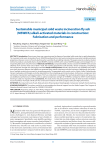
Статья научная
Introduction. Recent years have seen a pressing need to dispose of municipal solid waste due to rapid urbanization. The municipal solid waste incineration fly ash (MSWIFA) produced from solid waste incineration power plant exhibits pozzolanic properties and poses concern of toxicity leaching when used directly as building materials. This paper presents an alkali-activation method to produce sustainable alkali-activated MSWIFA materials (AAFMs) with various MSWIFA dosages and investigate the corresponding fabrication and performance. Materials and Methods. Composited alkali activators activate the MSWIFA with constant alkalinity of 5% and the molar ratio of Si/Na = 0.86. The resulting geopolymers' bulk densities, mineral composites, morphology, and compression strength are thoroughly examined. Results and discussions. Results show that the use of MSWIFA may lead to more loose structures because the bubbles are generated from metallic aluminum and alkali activators. Additionally, the production of multiple crystals also accounts for increasing porosity. The generated multi-crystals such as Sylvite, Halite, Hydrocalumite, Calcium Hydroxide, and Ettringite are further detected from the morphology and mineral analysis. Furthermore, compression tests and toxicity characteristic leaching procedures (TCLP) are conducted to investigate the mechanical performance and heavy metals solidification performance of AAFMs, with an optimal compression strength of 19.99MPa at 28 days for AAFM-10 while toxicity leaching is subject to regularity limits. Conclusions. This study shows that great potential of using the alkali-activation method to recycle hazardous municipal solid fly ash into construction materials with both ecological safety and high performance.
Бесплатно
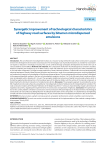
Статья научная
Introduction. The use of bitumen microdispersed emulsion as a resource-saving method for road surface construction is a popular trend in the development of innovative nanostructures. The technological use of petroleum bitumen as a binder for road materials requires a reduction in rheological viscosity. This can be achieved through synergistic developments that involve the use of various additives and modifiers. Methods and materials. The composition of bitumen microheterogeneous emulsions includes: bitumen-containing raw materials (up to 70–80% of mass); water with hardness up to 6 mg-eq/l (from 20 to 30%); emulsifiers (up to 3%) and other components. For large-tonnage production of water- bitumen emulsions, a colloid mill is the most technologically advanced equipment. Results. Water-bitumen emulsions are formed as a result of two competing processes: crushing (dispersion) and coalescence (merging) of microdroplets of the bitumen dispersed phase. The microheterogeneous bitumen phase is distributed in the aqueous dispersion medium in the form of microdroplets ranging in size from 1 to 10 μm (the main share is made up of bitumen microdroplets with a diameter of 2–4.5 μm). The synergetic durable microstructure of asphalt concrete road surfaces, which is formed by supplementing interaction in the boundary layers of the bitumen binder with the surface of the mineral component, is determined by the dominant interaction of complementary factors. Discussion. The synergetic approach to extending the service life of asphalt concrete road surfaces by using bitumen microdispersed emulsions holds promise for interpreting their evolution. The road construction industry of the Russian Federation at the beginning of the 21st century is characterized by a large-scale revision of regulatory documents, regulating the requirements for the construction and operation of highways. Conclusion. The optimal solution to the current problems of intensive construction and reconstruction of Russian highways is the improvement of technological characteristics of road surfaces by adding bitumen microdispersed emulsions to the composition. In complementary strengthening of weak soils of the road surface of high-speed highways, the use of water-bitumen microdispersed emulsions is also recommended.
Бесплатно
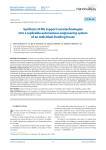
Статья научная
Introduction. Currently, one can witness a boom of renewable energy in foreign countries: zones with earth, coastal and even offshore wind power plants are emerging, and the roofs of houses, hotels, schools and hospitals are being "dressed" by solar batteries and by panels to generate electricity and water. At the same time, despite the fact that these installations are unreliable and rare sources, many experts and politicians begin to mistakenly consider them as the basic ones. All that poses a scientific and technical problem of determining the place of nature-like technologies in the structure of life support systems of the population. Methods, models and tools. The paper analyzes the engineering systems of multi-apartment residential buildings and individual residential buildings that deliver life support resources (electricity, gas, cold and hot water, etc.). But one should also note that the engineering systems often keep potential fire-energy and environmental harm. To resolve the mentioned problems, some nanotechnologies and Russian patents concerning autonomous electricity, water, heat supply of individual residential buildings on them were proposed. Results and discussion. Modeling has shown that the combination of "Shukhovskaya" and vortex wind turbines with domestic hydraulic panels and solar panels makes it possible to create duplicated and tripled engineering systems of individual residential buildings, which, in terms of quality, reliability and safety parameters, are several orders of magnitude higher than the existing centralized resource supply systems for the residential sector of cities and rural settlements. Conclusion. The proposed approach makes it possible to determine the place of the so-called renewable energy in the structure of the resource supply system for cities and rural settlements, and it remains to assess its effectiveness, which is supposed to be done using the Leontiev-Ford model and the retro-forecasting method.
Бесплатно
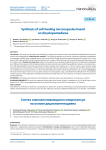
Synthesis of self-healing microcapsules based on dicyclopentadiene
Статья научная
Introduction. The study aims to explore the possibility of creating microcapsules using a carbamide-formaldehyde shell (coat) that contains dicyclopentadiene. Materials and methods. The following reagents were used to synthesize carbamide-formaldehyde microcapsules: distilled water; carbamide (urea) with a purity of 99%; technical formalin; sodium hydroxide (Pro Analysis «PA»); neem seed oil (NSO); polysorbate Twin-80; dicyclopentadiene with a purity of 98%; absolute ethyl alcohol (dehydrated); hydrochloric acid (Pro Analysis «PA»). Results and discussion. Organic microcapsules were obtained by polymerization of carbamide-formaldehyde resin. Filling of microcapsules with dicyclopentadiene has been carried out by establishing equilibrium between concentrated solution of dicyclopentadiene in alcohol and capsule contents. Average size of capsules was ~100 μm. Capsules have spherical shape and solid shell. Fourier-transform IR (FTIR) spectrum confirmed required compositions of capsule shell and filler. Analysis of DSC curve (Differential scanning calorimetry curve) showed that filling of capsules with dicyclopentadiene was successful. Conclusion. The result of the research done is the successful synthesis of microcapsules using a carbamide-formaldehyde shell. This synthesis of microcapsules and its application in building materials technology opens up new prospects for creating composites with selfhealing properties.
Бесплатно
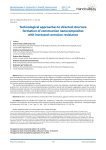
Статья научная
Physico-chemical processes of structure formation in nanocomposite building materials are associated with transformations of binding matrices and reinforcing components. The efficiency of building composites in the designed structures depends on the accurate choice of the source components: nanobinders, fillers (aggregates) and manufacturing technology. Increased corrosion resistance of building materials is provided by optimal selection of nanobinders and fillers, by increased density and treatment of the structure surface with protective coatings. The manufacturing feasibilities for nanocomposites based on various raw materials, nanobinders (gypsum, cement, bitumen, polymer, etc.), and inclusion of various dispersed phases (nanofillers, natural and technogenic aggregates) expand the variety of building composite materials. The synergistic dynamism of the occurrence of geometrical regularity of nanostructures during the structure formation of binders correctly demonstrates the fractal concept. Fractal nanostructures of binders with a rough surface are formed according to mechanism of diffusion-limited aggregation.
Бесплатно
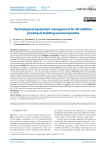
Technological equipment management for 3D additive printing of building nanocomposites
Статья научная
Introduction. The development of innovative approaches to digital equipment control that ensure the production of 3D building structures with high operational and technical-economic characteristics remains an urgent task. The handling and maintenance of technological equipment during the process of 3D-printing of construction objects do not always meet the modern requirements of technical systems management. Methods and materials. 3D-printing is based on the method of extrusion: molding of a building structure layer-by-layer with the addition and fairly rapid subsequent solidification of nanocomposite building materials. The resulting optimized nanocomposition must have the required rheology, which set the comb-like polycarboxylate esters with nanosteric repulsion at a distance of ≈ 11 nm. In order to organize a stable 3D-printing technology, it is also necessary to select the appropriate optimal fillers that provide the necessary physical, mechanical and operational characteristics to the hardened nanocomposite. Results. The effectiveness of three-dimensional printing calls for the coordinated operation of a construction-grade 3D-printer. In this regard, it is necessary to have concrete pumping equipment that is able to pump the initial nanocomposition through flexible pipelines at a certain speed. It is necessary to consider the influence of pressure and volume to increase the power of the concrete pump motor by 14–17%, and at the same tine reduce the level of vibrations. Discussion. Digital 3D-technologies reveal unique opportunities for innovative production of three-dimensional construction objects and engineering structures. Technological quality management of 3D-printing depends on the correct alignment of the printer mechanisms, and the reduction of defective products can be achieved by adjusting the molding parameters of building nanocomposites. The structure-forming curing of Portland cement nanocomposites is based on the formation of fractal structures of calcium hydrosilicate clusters with dimensions of 47–51 nm, that form nanoaggregates (125–132 nm), which gradually cement the fillers due to adhesive interactions. The high demand for the corresponding equipment only strengthens the advantages of 3D-additive technologies: its practical waste-free operation, low power consumption of 3D-printers, time reduction of design-to-completion process by 8–11 times. Conclusions. Technological managing of concrete pump equipment for 3D-additive printing of building nanocomposites reduces energy costs by 26–29%, and at the same time reduces the level of vibration.
Бесплатно
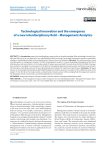
Technological innovation and the emergence of a new interdisciplinary field – Management Analytics
Статья научная
The Introduction argues that interdisciplinary research relies on shared knowledge. When knowledge is shared, a fundamental shift can occur over time, and a new interdisciplinary field can emerge. For example, nanoscience, quantum computation emerges as interdisciplinary fields that eventually grew to become their own disciplines. Main part. The article provides a review of extant papers on management analytics. The field of management analytics is a newly developing interdisciplinary field that is attracting more and more attention. In this study, overall, 201 papers were examined. The results show that that the field of management analytics is emerging. Two main aspects of the field are investigated: application-based research and theory-based research. This study aims at providing a status of the area called Management Analytics for academia and practitioners. Conclusion. This paper focuses on the emerging interdisciplinary field called Management Analytics, based on an analysis of 201 published articles on the subject. For the first time, this study provides a comprehensive literature review of the emerging field of management analytics. The developing trends, characteristics, and related applications are introduced.
Бесплатно
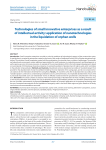
Статья научная
Introduction. Small innovative enterprises are able to solve the problems of technological support of the construction sector. A special place is occupied by enterprises created on the basis of the results of intellectual activity (RIA) of higher educational institutions. The activities of small companies created with the participation of universities have a number of advantages. The scientific and educational environment creates additional opportunities for small businesses in conducting research and development, as well as opens up access to human resources. An example of the commercialization of RIA is the technological developments based on nanomaterial of St Petersburg University enterprises in solving the problem of abandonment of orphan wells, which contribute to the pollution of groundwater. Methods and materials. Abandoned wells are abandoned according to “standard designs” that provide for the abandonment of only the wellbore limited by the inner diameter of the casing pipes, and do not contain technical solutions for the elimination of behind-the-casing flows. Results. An ownerless well, after its abandonment according to the “standard project”, continues to contaminate groundwater, but on a permanent basis, since repeated abandonment of such wells is practically impossible. Each such “abandoned” well is an officially created channel for groundwater contamination in the long term. Discussion. The article contains an analysis of the existing technology of abandonment of wells, including ownerless ones, as well as the justification of the futility of its use to eliminate sources of groundwater pollution. An alternative solution based on the use of modern nanomaterials is proposed. Conclusion. Examples of successful application of the proposed technology with the use of cemented nanomaterials for the liquidation of emergency wells in the North-West region are given. Based on the study, conclusions and recommendations are made.
Бесплатно
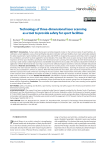
Technology of three-dimensional laser scanning as a tool to provide safety for sport facilities
Статья научная
Introduction. Human safety during sport activities depends mostly on the technical states of sport facilities. According to current legislation, every school and higher education institution with sport facilities must meet nationwide standards for safety requirements. Sports facilities with existing codes and GOSTR are inspected by a special committee, which is required for accreditation, and which has been applied for several decades. This study offers more accurate and up-to-date methods for inspection of these sport facilities, specifically three-dimensional laser scanning. The technology of three-dimensional laser scanning is used mainly to obtain high precision and detailed measurements of any object. The authors analyzed the methods of application of three-dimensional laser scanning to assure human safety during sport activities at schools and higher educational institutions. Materials and methods. The objects analyzed were running tracks at the stadium at Kuban State Technological University. The main research method is an empirical one, namely field measurements. Scanning of racetracks was performed with the Leica ScanStation C10 from six stations. After field measurements were taken, point cloud was imported into special software to process the results of the laser scanning by the Leica Cyclone. After measurements were taken, all the critical points of the racetracks were classified by the height. According to existing standards for racetracks at athletic stadiums, the allowable value of roughness is 10 mm. Results and discussion. Classification of points revealed that the limit value for roughness of University’s racetrack was 9 mm (which meets existing safety requirements for racetracks). Thus, racetracks of Kuban State Technological University underwent the accreditation process performed by the research group from the Department of Cadaster and Geo-Engineering. Conclusion. The conclusion of the paper detertmined that, in fact, laser scanning can be applied to control safety of race tracks.
Бесплатно
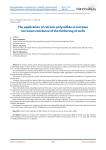
The application of calcium polysulfide to increase corrosion resistance of the timbering of wells
Статья научная
The cement slurries used in well casing should ensure the tightness of the lining and protect the casing from aggressive formation fluids. At the same time, cement and water based solutions are used for cementing, with a water-cement ratio of 0.45–0.9, which predetermines their high porosity and low corrosion resistance. The technologies for increasing the durability of concrete used in con-struction practice when fixing wells are not acceptable. One of the most aggressive components of reservoir fluids is hydrogen sulfide, depending on thermodynamic conditions, can be both dissolved and gaseous. The analysis of various types of corrosion of cement stone shows the ki-netics is determined by the diffusion of aggressive ions into the stone. To reduce the porosity of the cement stone, calcium polysulfide has been proposed, which can precipitate in the pores of the stone during hardening of the cement slurries, clogging the pores, reducing their size, slowing down the diffusion rate of aggressive ions into the cement stone. In addition, calcium polysulfide adsorbing in the pores on cement hardening products will ensure the inhibition of pore space. Three methods of calcium polysulfide injection into the cement slurries were tested: into the tempering fluid (water), directly into the prepared cement slurry and dry method, through cement powder, which was subsequently subjected to disintegrator treatment. The results of the experiments showed calcium polysulfide make an impact on the rheological properties and pumpability of cement slurries, increasing the strength of the obtained stone and reducing its permeability. The stability of a stone in an acidic environment was estimated by its corrosion by one molar hydrochloric acid. The depth of stone corrosion with increasing concentration of PSS decreased from 30 to 6 mm in 21 days. When testing the cement stone under the action of dissolved hydrogen sulfide for 45 days, it was shown that the increased concentration of calcium polysulfide from 0 to 5% reduced the corrosion depth from 5.0 to 0.3 mm, depending on the technology of adding the reagent. Micrographs of cement stone samples proved that calcium polysulfide, being distributed in the pore space, blocks the surface of the cement stone, limiting the contact of aggressive ions with hardening products.
Бесплатно
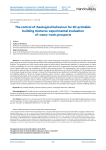
Статья научная
The extrudability and firm stability are the criteria rheological characteristics of building 3D printable mixtures. This paper presents the results of experimental studies of the rheological behaviour of fresh cement pastes as matrices for 3D printable mixtures. The squeezing test, with constant plate speed, has been used for determination plasticity of cement pastes as criteria of their extrudability. As a result, the typical rheological models of the fresh cement pastes have been identified. In addition, the value of plastic yield stress was evaluated as criteria for the extrusion process. The squeezing test, with constant strain rate, has been used for determination structural and plastic strength, plastic deformations as criteria for the ability of a 3D printable mixture to hold shape during multi-layer casting. It is shown that these properties are significantly controlled by the plasticizer and viscosity modifying additives as factors of changes of disperse system «cement + water» properties. It is established that electrolytes, nanodispersed adsorption-active inorganic modifying additives increase the plasticity of the fresh cement pastes. At the same time, the nanodispersed adsorption-active inorganic modifying additives develop plastic strength as criteria of firm stability. The introduction of inorganic polymers, inert to cement, improves the structural strength of fresh cement pastes but significantly reduces their plasticity. It is shown that the management of rheological behaviour of 3D printable mixtures should be based only by the complex using of chemical addi-tives such as electrolytes, plasticizers and nanodispersed inorganic viscosity modifying additives.
Бесплатно
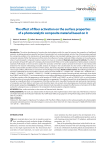
Статья научная
Introduction. The active development of construction technologies entails the need to improve the properties of traditional materials, including giving them specific functional characteristics such as photocatalytic activity. One of the promising methods for solving this problem is the introduction of specialized additives into standard building mixes, which include photocatalytic composite materials. Within the framework of this article, the influence of various methods of fiber activation on the surface properties of a photocatalytic composite material created on its basis is considered. Materials and research methods. The effect of pre-activation of basalt (BF), glass (GF) and glass alkali-resistant (GAF) fibers on the surface properties of photocatalytic composite materials (PCM) based on them has been studied. The activation of the fiber surface consisted in thermal (T) and chemical (AA) treatment. The research methodology included: analysis of changes in the concentration of active centers of Brensted acids on the fiber surface before and after activation of their surface, after direct deposition of titanium dioxide on the obtained samples of various types of fibers, followed by an assessment of morphological changes. Results and discussions. The following growth trend has been established for the total number of active centers for PCM: PCM(BF+Т) → PCM(GF+AA) → PCM(BF+AA) → PCM(GAF+AA) → PCM(GF) → PCM(GAF+Т) → PCM(GAF) → PCM(GF+Т) → PCM(BF). According to the results of scanning electron microscopy, it was found that PCM(GF) and PCM(GAF+T) are characterized by a more uniform distribution of titanium dioxide particles over the entire surface of the fiber, creating a film-like appearance, unlike samples of PCM(BF) and PCM(GF), as well as PCM(GAF+AA), on which titanium dioxide particles are unevenly distributed, forming growths or aggregates. The analysis showed that sol-gel deposition of titanium dioxide has a significant effect on the properties of the fiber surface, which may affect the physical and mechanical characteristics of composites and their ability to self-clean, and should be taken into account when developing new functional materials with photocatalytic properties. Conclusion. The results obtained made it possible to evaluate the effectiveness of activation of the fiber surface for subsequent use as a substrate in the composition of photocatalytic composite materials.
Бесплатно

